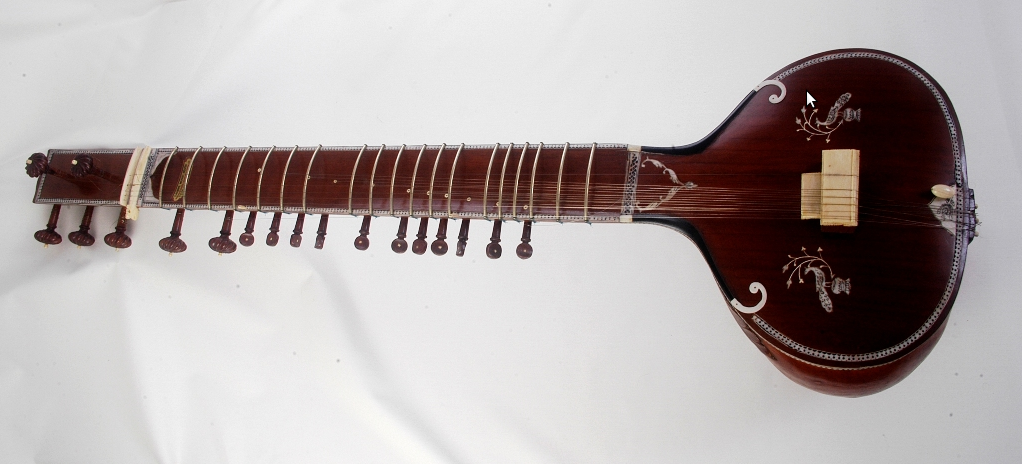Search Topic
The Sitar: A Beautiful Musical Instrument

The Sitar is an Indian musical instrument that is the most popular one in India. It has been used since ancient times & is still considered to be very important among the musical instrument of the world. The sitar has a long history. The mesmerizing instrument has been in use for centuries and continues to be one of the primary instruments used in Eastern music today.
Structure of Sitar
In northern India, Pakistan, and Bangladesh, the sitar is a stringed instrument of the lute family. A sitar usually measures 1.2 meters in length (4 feet) and features a pear-shaped wooden body, a long, wide, hollow wooden neck, as well as front and side tuning pegs and 20 movable arched frets. The stringed instrument usually has five melodic strings made of metal, a drone string for enhancing the rhythm or to accent the pulse, as well as up to 13 sympathetic strings under the fretboard that are tuned to the notes of the raga (melodic framework).
There is a hemispherical base made out of splintered gourds (grave), a wooden half-round frame (dandi), a second resonator, and several wooden pegs inserted along the length of the sitar. There are 16 to 24 frets on the dandi. Metal frets are tied along the neck, so they can be moved as needed. Depending on its model, the sitar may have a resonating gourd under the pegbox end of the neck;
Uses of Sitar
Musicians use sitars in many different genres. North Indian classical music (Hindustani Sangeet), cinematic music, and western fusion are common uses for this melody. Folk music or classical performances in south India rarely feature it. Complex construction is evident in the sitar. Natural materials are used in its construction by exceptionally talented and well-trained craftsmen.
History of Sitar
The origin of the sitar can be traced back to ancient India, where it was called the veena. It is believed that the invention of this instrument took place in the 6th century BCE, during what has been known as the Golden Age of Hinduism. The name sitar comes from the Persian word Setar, which means “three strings”. This name was given because it had three strings originally, though today, it usually has 21 or 22 strings that are played with a pick and a slide.
The sitar is a plucked stringed instrument used in Indian classical music. It derives its distinctive timbre and resonance from sympathetic strings, a long hollow neck and a gourd resonating chamber. It has been an integral part of the classical music of India for centuries and has gained increasing popularity in other parts of the world as well. The sitar was introduced in the court of the Mughal emperor Akbar at Fatehpur Sikri, Agra, as an accompaniment to vocal music. In addition to traditional ensembles, it is often featured in fusion concerts. Amir Khusrow, a Sufi mystic who lived during the 16th century, is also credited with a major role in the development of the instrument.
Conclusion:
The sitar is a wonderful instrument that can be used to create beautiful music. If you’re interested in learning more about it take a look at our blog today!
The tuning of the sitar can be done in a number of ways. Even the same instrument will be tuned differently from piece to piece, according to the requirements of the Indian raag. To know more information check out “How To Tune The Sitar In Easy Steps: A Beginners’ Guide” in our next blog.








